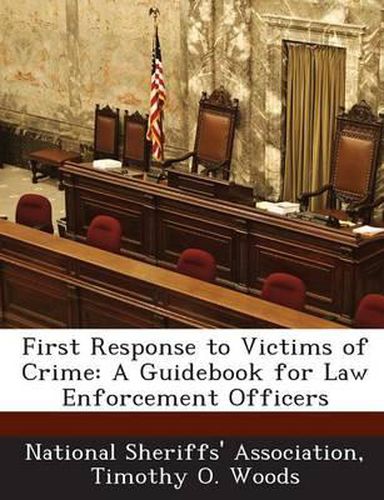Readings Newsletter
Become a Readings Member to make your shopping experience even easier.
Sign in or sign up for free!
You’re not far away from qualifying for FREE standard shipping within Australia
You’ve qualified for FREE standard shipping within Australia
The cart is loading…






The first section presents basic guidelines on officers’ first response to victims’ three major needs: to feel safe, to express their emotions, and to know “what comes next.” Guidelines are listed for the specific attitudes and behaviors officers should display in meeting each of these three major victim needs. The guidebook’s second section focuses on officers’ first response to specific types of crime victims. This includes victims distinguished by age (older victims and child victims), those distinguished by a disability (Alzheimer’s disease, mental illness, mental retardation, blindness or vision impairment, deafness or difficulty in hearing, and those with limited physical mobility), and victims who are immigrants. The guidebook’s third section lists appropriate officer behaviors and attitudes toward individuals victimized by each of the following types of offenses: sexual assault, domestic violence, drunk-driving crashes, survivors of homicide victims, human trafficking, and mass-casualty crimes. A directory of national victim service providers is included.
$9.00 standard shipping within Australia
FREE standard shipping within Australia for orders over $100.00
Express & International shipping calculated at checkout
The first section presents basic guidelines on officers’ first response to victims’ three major needs: to feel safe, to express their emotions, and to know “what comes next.” Guidelines are listed for the specific attitudes and behaviors officers should display in meeting each of these three major victim needs. The guidebook’s second section focuses on officers’ first response to specific types of crime victims. This includes victims distinguished by age (older victims and child victims), those distinguished by a disability (Alzheimer’s disease, mental illness, mental retardation, blindness or vision impairment, deafness or difficulty in hearing, and those with limited physical mobility), and victims who are immigrants. The guidebook’s third section lists appropriate officer behaviors and attitudes toward individuals victimized by each of the following types of offenses: sexual assault, domestic violence, drunk-driving crashes, survivors of homicide victims, human trafficking, and mass-casualty crimes. A directory of national victim service providers is included.